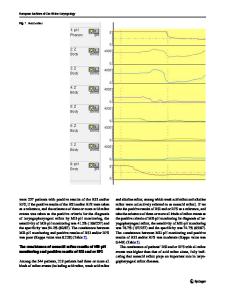The Role of Eosinophils in Rhinologic Diseases
The eosinophil granulocyte, although likely first observed by Wharton Jones in 1846 in unstained preparations of peripheral blood, was so named by Paul Ehrlich in 1879 because of the intense staining of its granules with the acidic dye eosin Gleich and Ad
- PDF / 992,396 Bytes
- 14 Pages / 504.57 x 720 pts Page_size
- 84 Downloads / 337 Views
The Role of Eosinophils in Rhinologic Diseases Jens Ponikau, Hirohito Kita, and David A. Sherris
Keywords
Eosinophil • Innate and Acquired Immunity • Chronic Rhinosinusits • Sinusitis • Major Basic Protein (MBP)
Core Messages
• In rhinology, eosinophils are important effector cells in allergic rhinitis (AR) and chronic rhinosinusitis (CRS). • Eosinophils show different activation and degranulation pattern in AR versus CRS. • In CRS, eosinophils do not degranulate in the tissue but in the mucus. • Eosinophils release toxic and damage inflicting major basic protein in CRS, but not AR.
J. Ponikau, MD (*) Department of Otorhinolaryngology, University at Buffalo, The State University of New York, Gromo Institute and Sinus Center, 1237 Delaware Avenue, Buffalo, NY 14209, USA e-mail: [email protected] H. Kita, MD Division of Allergic Diseases and Department of Medicine, Mayo Clinic, 200 First Street SW, Rochester, MN 55905, USA e-mail: [email protected] D.A. Sherris, MD Department of Otolaryngology, University at Buffalo, 1237 Delaware Avenue, Buffalo, NY 14209, USA e-mail: [email protected]
8.1
Introduction
The eosinophil granulocyte, although likely first observed by Wharton Jones in 1846 in unstained preparations of peripheral blood, was so named by Paul Ehrlich in 1879 because of the intense staining of its granules with the acidic dye eosin (Gleich and Adolphson 1986). Since that time, the eosinophil has been the subject of extensive investigation. Its occurrence in such disparate conditions as parasitic infections, presumably for the benefit of the human host, and hypersensitivity diseases, perhaps to the detriment of the patient, although paradoxical, has become better understood as a consequence of newer information. Eosinophils are resident and nonpathologic in various organs such as gastrointestinal tract and mammary glands, and they may play roles in tissue and immune homeostasis of these organs. However, eosinophils are strikingly absent in the nose and paranasal sinuses in healthy individuals, which is in contrast to their presence in three distinct rhinologic diseases: 1. Chronic rhinosinusitis (CRS) 2. Allergic rhinitis (AR) 3. Upper respiratory viral infection (common cold) In addition, nonallergic rhinitis with eosinophilia (NARES) has been described as a syndrome. However, it is poorly defined only as lack of
T.M. Önerci (ed.), Nasal Physiology and Pathophysiology of Nasal Disorders, DOI 10.1007/978-3-642-37250-6_8, © Springer-Verlag Berlin Heidelberg 2013
95
J. Ponikau et al.
96
detectable IgE combined with evidence of eosinophils present in the nasal cavity. Coupled with the understanding that CRS is not limited to the sinuses but usually also involves the nasal cavity (and consequently the terminology change from chronic sinusitis to chronic rhinosinusitis) and the similarity of symptoms, no evidence exists to distinguish NARES from a mild or early stages of CRS, and for the purpose of this chapter is treated as such. In the above immune responses, eosinophils are recruited in
Data Loading...











